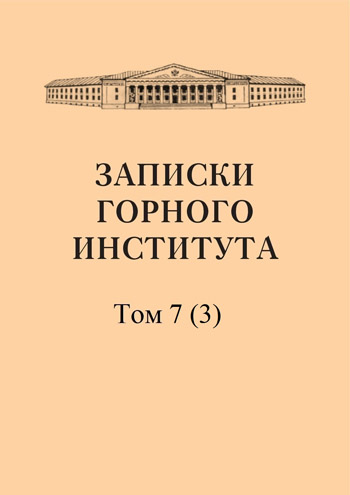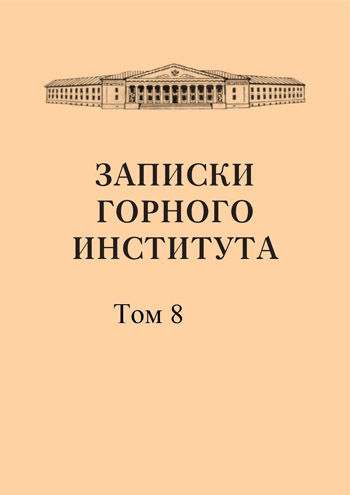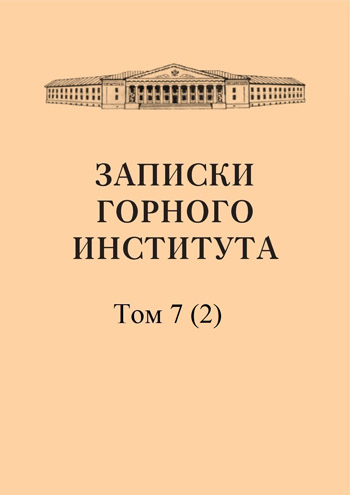-
Date submitted1928-09-18
-
Date accepted1928-11-02
-
Date published1929-03-01
On Bessel's functions of many variables and their applications in mechanics
- Authors:
- M. I. Akimov
Chapter IV. Some series expansions in generalized Bessel's functions. Chapter V Application of generalized Bessel's functions to problems of mechanics.
-
Date submitted1928-09-30
-
Date accepted1928-11-10
-
Date published1929-03-01
Application of singular elliptic functions to the search for some properties of Legendre polynomials
- Authors:
- V. A. Krechmar
In this work the following theorem is proven. Let it be a negative integer rational number without squares. Consider a square field k (Nm) and let it be the basis of some ideal of this field. Moreover, let p (u, ω1, ω2) be the famous Weierstrasse definition (in the future we will dimerize the basis ω1, ω2 so that the ratio ω1, ω2 has a positive imaginary part), which follows the following differential equation (see article).
-
Date submitted1928-09-08
-
Date accepted1928-11-11
-
Date published1929-03-01
On determining the equilibrium positions of floating bodies
- Authors:
- N. Neronov
The article discusses the general conditions of equilibrium, the case of a cylindrical floating body, the case of flat inclinations of a floating body that has a plane of symmetry and is limited by a ruled surface. The author gives a definition of metacentric height based on the angle of inclination of a floating body.
-
Date submitted1928-09-24
-
Date accepted1928-11-27
-
Date published1929-03-01
Checking the optical constants given in "Themicroscopique determination of the nonopaque minerals" by E. Larsen
- Authors:
- O. D. Levitskii
The check was carried out using diagrams by A.K. Boldyrev. The check was carried out as follows (see article). It turned out that the discrepancies did not exceed 1/2°; in some cases, with very small ∆g and ∆р, the reading accuracy dropped to 1°, but the latter is rare. Upon inspection, large discrepancies were discovered between the values of 2 V given by Larsen and 2 V obtained from the diagrams (see article). The total of 380 minerals were tested.
-
Date submitted1928-09-07
-
Date accepted1928-11-27
-
Date published1929-03-01
Acetyl chloride, sulfuryl chloride and monochloroacetic acid. The process of obtaining them in large quantities in the laboratory
- Authors:
- A. K. Boldyrev
This article is a report on the experiments that I conducted during the period from May 23, 1916 to December 20, 1917. These works, like many others of their kind, were caused by the extreme shortage of chemical products on the Russian market due to the World War. We came to the decision to first address the issue of producing acetyl chloride using sulfur. This article represents a complete report on all the work carried out by the author in the direction indicated here.
-
Date submitted1928-09-29
-
Date accepted1928-11-07
-
Date published1929-03-01
A simple graphical method for identifying crystal face symbols on a stereographic projection
- Authors:
- V. V. Dolivo-Dobrovol'skii
It is no coincidence that the author did not title this article as a new method for determining symbols. Being a combination of two already known methods, this method cannot be called new. It turns out that two methods - the method of Prof. O. M. Anshelis and a slightly modified method of belts with their joint application make the process of determining symbols simpler than when using each of these methods separately.However, the purpose of this article is not only to show a method for such a joint application of these methods, but also to give a simple and independent conclusion and proof of the proposed combined method. The author considers it necessary to give such an independent conclusion in order to make this method quite accessible, both practically and theoretically, even to persons unfamiliar with the methods on which the proposed method is based, from which the proposed method originated.
-
Date submitted1928-09-10
-
Date accepted1928-11-12
-
Date published1929-03-01
Solubility curve of copper in aluminum in the solid state
- Authors:
- P. Ya. Sal'dau
- N. G. Anisimov
With the very rapid development of automobile and aircraft construction, the question of obtaining materials that are lightweight and at the same time have sufficient mechanical properties is becoming more and more relevant. The best and, so far, unsurpassed in this regard are alloys such as duralumin, with approximate content (see article). The alloy of duralumin, as you can see, is relatively complex and therefore experiments have long been carried out in different places around the globe to obtain simpler alloys that would be not inferior to duralumin in their mechanical qualities. Of these simple alloys, the most successful, especially in America, is an alloy of aluminum and copper. The nature of this alloy has not yet been sufficiently elucidated. Therefore, in order to clarify the issue in more detail, it seemed appropriate to us to study the change in the solubility of copper in aluminum in the solid state depending on temperature, since according to available data, such a change in the solubility of various components in alloys is the main reason determining the properties of alloys such as duralumin, including property of "aging".
-
Date submitted1928-09-01
-
Date accepted1928-11-26
-
Date published1929-03-01
Report on the work of the Mining Scientific Circle named after B.I. Bokii at LGI for 1928/29 academic year
- Authors:
- Vol. 7(3)
There were 9 meetings of the Circle Board. 20 issues were discussed. There were 3 general meetings of the Circle. Report by Prof. Shklyarsky "Charging the batteries of battery electric locomotives." Rev. Vaipolin, A. F. “Mining of mines at Svirstroy.” Postgraduate student Zvyagin, P.Z. “Gas shelter at the N. Smolyaninovskaya mine”, Eng. Berlin. "Sudden release of gas at the same mine".
-
Date submitted1928-09-26
-
Date accepted1928-11-18
-
Date published1929-03-01
Report on the work of the Scientific Petroleum Circle of the Leningrad Mining Institute for the 1928/29 academic year
- Authors:
- Vol. 7(3)
As you know, the main task of the Scientific Petroleum Circle is to improve the qualifications of the future red specialist. In broader terms, this means that by participating in the circle work, the student must supplement his knowledge with what the curriculum gives him. It seems to us that in our work we achieve this achieved the following: staging scientific and technical reports, where students, through lively discussions of the issues raised, became acquainted with and mastered the technology of the oil industry;organization of the diploma design office, which provided diploma students with the best working conditions, when almost everything that is necessary for calm business and fruitful work is at hand;normal operation of the library.


